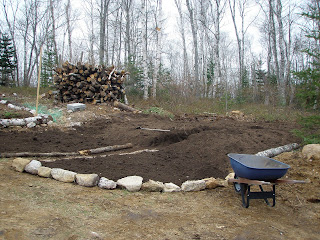
 Short on garden space? Or perhaps you’re garden-free and only have a balcony to cultivate your crops? Either way, growing veggies and herbs in containers is an easy and fun way to add unbelievable flavour to your food!
Short on garden space? Or perhaps you’re garden-free and only have a balcony to cultivate your crops? Either way, growing veggies and herbs in containers is an easy and fun way to add unbelievable flavour to your food!Before I get to the best crops for pots, I want to touch on the subject of containers because when it comes to picking a pot, size does matter. The bigger the pot, the less watering you’ll need to do. When it comes to watering containers, I’m a bit lazy and don’t want to be watering twice a day when the summer heat strikes, or even once a day for that matter! So, I look for a sizeable container that will be able to hold some moisture.
Even the material itself - wood, plastic, metal or clay – will help determine how much you will need to water. Light coloured plastic is very good at holding moisture, but darker coloured plastics can dry out quick. Wood is very insulating, especially when paired with a plastic liner that will protect the wood and help lock in moisture. Remember to use untreated wood for edible gardens!
Metal is ideal for a shaded container garden, but can overheat in the hot sun, so perhaps not the best choice for a container veggie plot. Clay is very natural and attractive, but plain, unglazed clay will wick away the moisture very quickly and is my least favourite choice for veggie containers for that reason. Herbs look great in clay or terra cotta though and a glazed clay window box or pot is ideal for a patio herb garden.
No matter what container you choose, remember that drainage is key! If your pots or window boxes don’t have drainage holes, make some if you can. If your pots are clay or terra cotta and lack drainage holes, use a plastic liner in the pot to help increase drainage. Roots that are constantly sitting in water will not grow well and your veggies will suffer.
When it comes to growing in containers, you must use potting soil. I’ve tried growing ornamentals, herbs and veggies with garden soil in the containers, and the results have been very disappointing. Potting soil, or organic potting soil is ideal – lightweight, retains moisture and drains well. If you have very large pots, fill the bottom half of the pot with chunks of styrofoam or syrofoam peanuts. This will help the pot stay lightweight, and save you some money on potting soil.
When it comes to the veggies themselves, pretty much any vegetable can be grown in a container – as long as you have plenty of sun! Therefore, grow what you love to eat! Heirloom tomatoes, cucumbers, pattypan zucchini, baby eggplant, sweet or spicy peppers, pole beans, salad greens, radishes, beets and so on!

One of my neighbours used to grow hot peppers in large black plastic containers on her paved driveway. The combination of the black plastic and the driveway moved her a few zones south and she was able to mature peppers that would not normally be cultivated in Nova Scotia.
When picking your varieties, look for bush or compact types – bush tomatoes, for example, are easier to control than the vining, indeterminate types that can grow 6-feet tall! There are also specific types of patio cucumbers and bush squash that will very well in containers. Underplant your tomatoes, peppers and eggplants with some cheerful nasturtiums, marigolds or calendula.
A patio pot of assorted gourmet lettuce also makes an interesting addition to a patio or deck. Be sure to include colourful varieties such as green and red leaf, baby romaine, oakleaf, butterhead and whatever else tempts your taste buds. Keep sowing fresh salad seed every 2 weeks to ensure a continuous harvest.

A window box makes an ideal miniature herb garden and can be filled with with basil, sage, parsley, rosemary, thyme and any other of your favourite herbs. Not only is it a great way to add fresh flavour to your cooking, but just rubbing your fingers over the foliage will release wonderful aromas to perfume your balcony or deck.
Keep in mind that you’ll need to feed your veggies often – I use a balanced organic liquid fertilizer every week at ½ strength to keep my potted crops happy. As mentioned above, proper watering is very important when growing in containers, and if sporadic, certain problems, such as Blossom End Rot, a tomato disorder that causes leathery black spots to grow on the bottom of tomatoes, can occur.




































